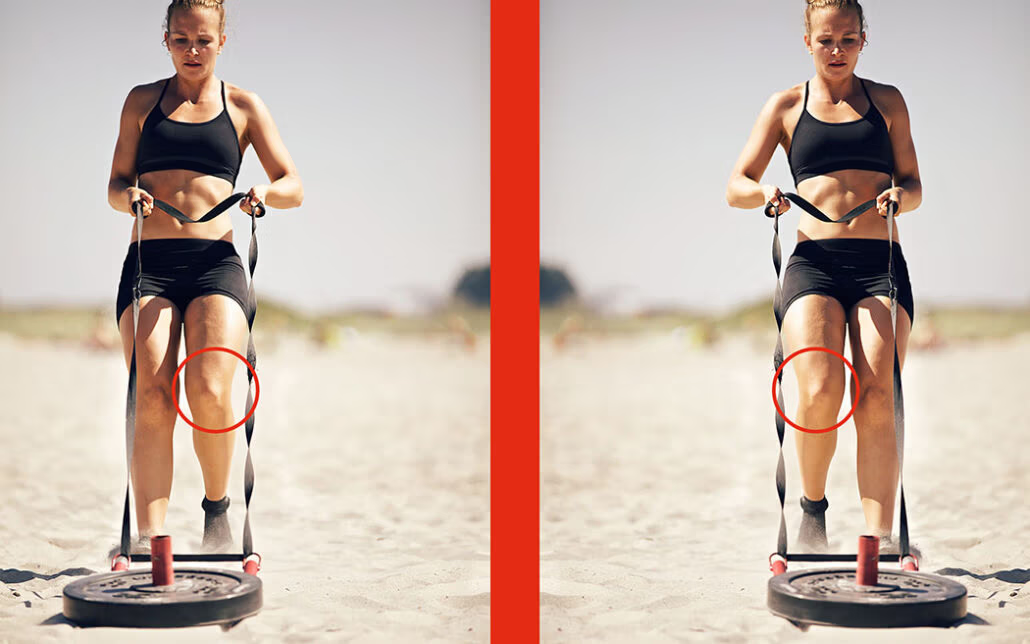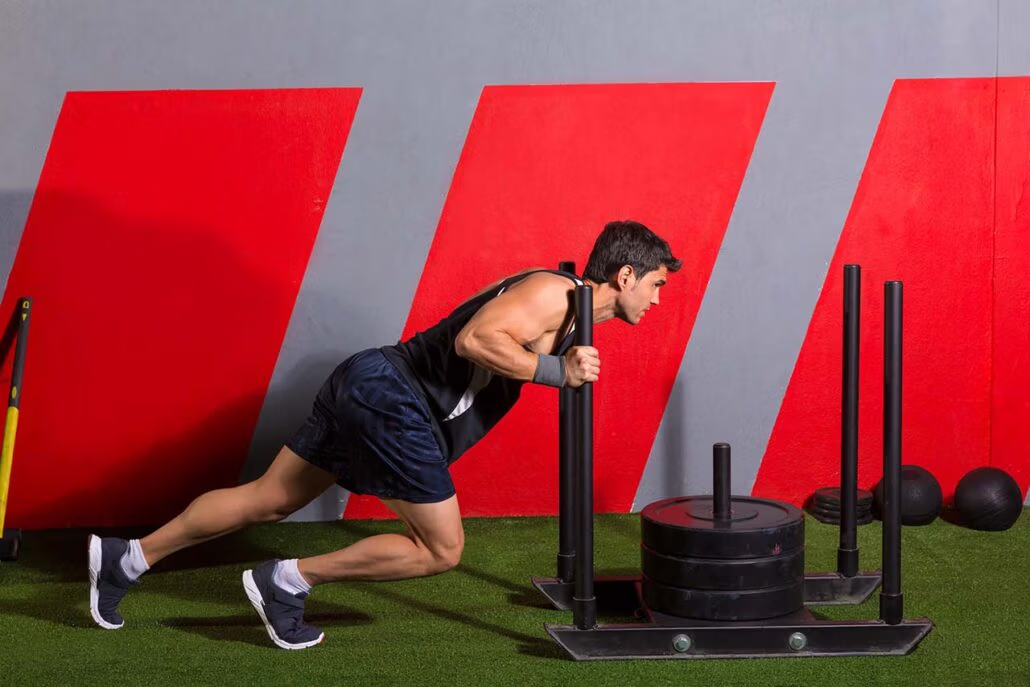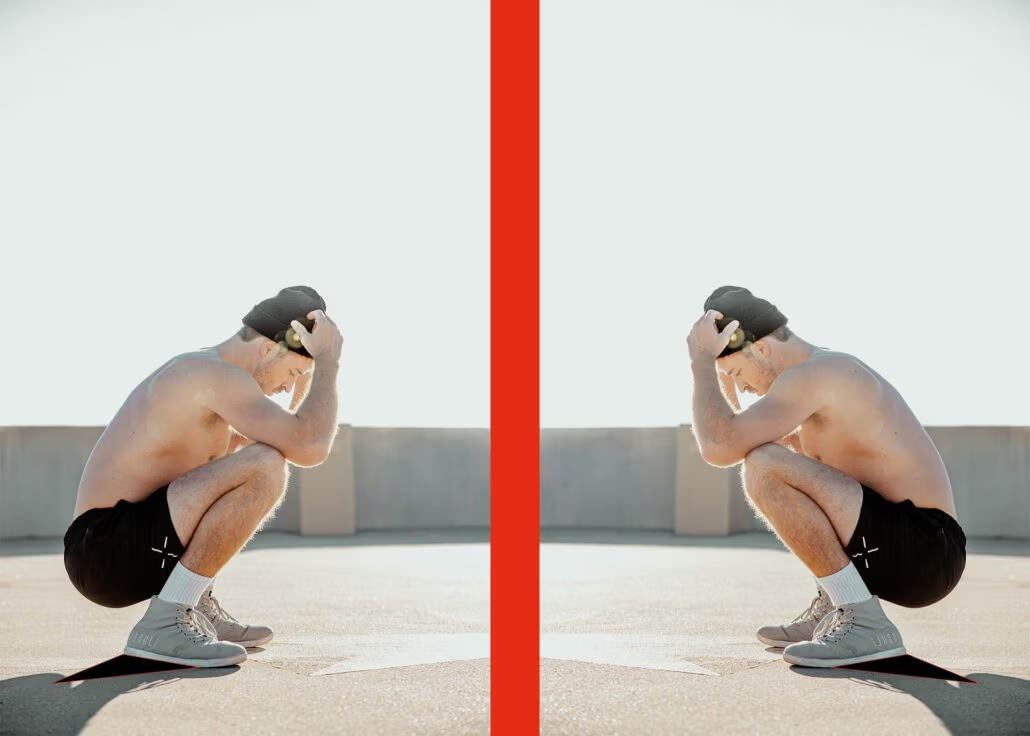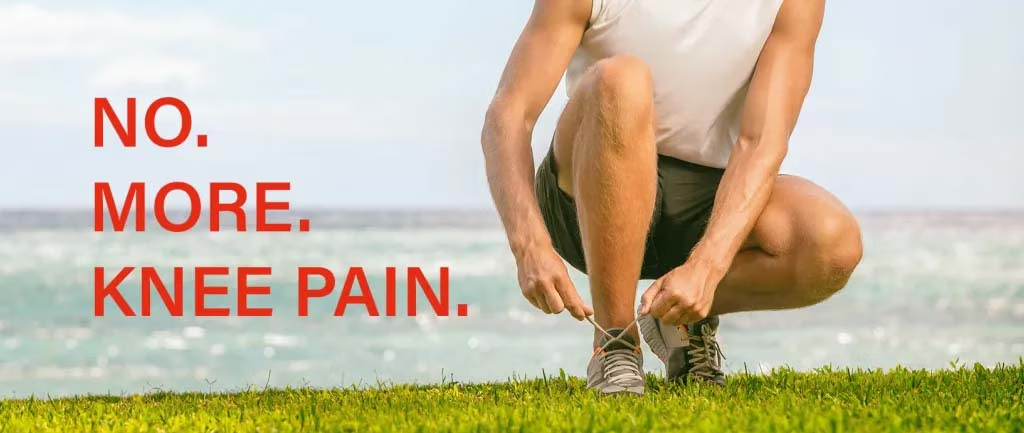I suffer from horrible knees. I could never escape the pain I was destined to feel after every basketball game. Jumping was laborious. Changing directions became slower by the minute. The problem always got to the point of no return – when the pain was so bad that I couldn’t play anymore. This was often followed by a 2-4 week hiatus of no basketball just to heal up properly. And like every great cycle, the process continued happening.
Why Were My Knees Giving Up On Me?
The knees are actually a pretty stable joint anatomically. This may come as a surprise given the story I just told. Since they don’t move in too many directions, they technically provide ample support. So why was I continuing to suffer pain? I did everything I could to rehab my knees – tons of strength training, ample warm-up and dynamic stretches before every game, and a solid nutrition plan. I also did plenty of physiotherapy knee exercises. What was missing?
It did a bunch of research. Implemented lots of trial and error. Eventually, it seemed like I was omitting some very important ways to strengthen and move the knee. The general exercises we were taught in most textbooks still play an important role for the knees. What these general exercises are missing however is resemblance to what the knees actually do in sport/activities.

What Physiotherapy Knee Exercises Are Missing
Here’s a FACT: The knees will go over the toes more times than not when playing sports. And it really doesn’t matter what sport. Just watch someone jump in slow motion and you’ll see it happen. Physiotherapy knee exercises historically focused on keeping the knees behind the toes when lunging or squatting. Although this may be important during the acute (early) phases of injury, training this way alone isn’t sufficient.
The missing link is simple. The knees must train through increasing levels of stress (i.e. tension on the muscles, tendons, and joints). And nothing puts the knee through more tension than allowing them to move beyond the toes while weight-bearing (i.e. training while on your feet). Structures like tendons and ligaments are put under more stress in these positions, giving them an opportunity to grow.
This can happen in many different ways at various degrees of intensity. It’s important to note that not everyone can begin putting maximal stress on the knee, and this is where physiotherapy really shines. A good physiotherapist will look for structural limitations in the knee that can include a loss in: range of motion, stability, strength, and even proprioception (i.e. your body’s awareness of where it is in space without requiring the use of vision).
Physical Therapy Knee Exercises Redesigned
Physical therapy knee exercises require a system. One that’s built to improve all characteristics of what it means to have healthy, strong knees. Let’s break this down into 3 methods. These methods are what I use to create physical therapy exercises for knee pain and dysfunction.
Method #1 - Gradually Increase How Far You Train Your Knees Over Toes
Just because we need to train knees over toes, doesn’t mean we do it right away. Like any great program, you need progressions. The way we progress these physical therapy knee exercises is by starting small, and adding increasing degrees of “knees-over-toes” or “KOT” position. In other words, progressing how far you allow your knees to go forward and beyond your toes. Below we rank them from lowest to highest on the KOT scale:

1. SLED PULLS
The sled pull is a great exercise to begin with. Super safe for a couple reasons. One is that the weight of the sled never moves you. You are in full control of the weight and movement. Compare that to a squat. The weight of the barbell along with the force of gravity will push you right through the floor if you let it.
It’s also really hard to go wrong or hurt yourself doing this exercise. Put on too much weight? The sled simply won’t move. Put too little? Well, you’re just wasting your time. The idea is to add enough weight so it slows you down as you pull the sled. Another great safety feature is that it removes most of the pressure from your spine. Most of the load goes where it needs to be, which is on your knees.
Don’t have a sled? That’s also fine. You can modify this a couple of ways. First, you can walk backwards up a hill which can mimic the sled-pull motion on the knees. Second, you can have a friend hold a strength band or rope with you, and walk backwards while they offer ample resistance. Third, you can walk backwards on a treadmill. Only this time, you don’t turn it on. This means you must now drag the belt of the treadmill in a way that mimics pulling a sled. Careful though. This last exercise can be damaging to the treadmill motor.

2. SLED PUSHES
Your knees must travel a bit further beyond your toes during a sled push. This makes it an effective progression from sled pulls. Sled pushes still offer all the same safety features of the pull. Only this time, your knees, ankles, and toes are moving a lot more. Since you push from the balls of your feet, your toes and ankles must go into a more extended position. This is great, especially for those with stiff toes and/or ankles – here’s a chance to improve your range of motion!
The sled push is also a more athletically-relevant position. This is because it resembles the position most athletes adopt (regardless of sport) when getting ready for action. We use it to generate as much force as possible. By pushing the sled, you are effectively training how much force you can generate.

3. KOT Squats
We were taught for a while not to allow our knees to go beyond our toes while performing a squat or lunge movement. However, it’s becoming increasingly clear that eliminating these types of movement is just a very bad idea. As discussed earlier, many athletic movements such as sprinting, jumping, and cutting naturally require us to get our knees past our toes. Our bodies naturally want to do these things as well. So why not optimize this through training?
KOT squats are one of the first physiotherapy knee exercises that we hold weights with. The easier variations of these begin with using a simple heel lift. This will help you perform a KOT squat while maintaining a full base of support (i.e. the entire foot remains planted on something).
More difficult progressions involve lifting the heel off the floor without support, and eventually eliminating hip movement to make the knee a primary mover (e.g. in sissy squats). It’s important that as you progress, your first few times are accomplished with little to no weight. These exercises can be tricky. It’s important to be comfortable with your form before adding more serious weight to the equation.

4. KOT Lunges
There are two reasons we keep KOT lunges as one of the later progressions. First, it’s a unilateral exercise. This means one leg is doing all of the knee over toes work while the trailing leg is doing the opposite movement (knee and hip extension). Second, it’s typically the most knee-over-toes position we can accomplish while training.
This exercise takes a bit of practice because a lack of flexibility in your hips makes it challenging. On the flip side, it’s a great addition for those with stiff hips! There are many variations of KOT lunges with some that begin easy. It does present the most options in terms of modification, allowing one to get creative in how they do them.
Method #2 - Improve "Accessory Motions" Of The Knee
Accessory motions are intricate, mostly involuntary movements that happen in the joint. These motions are necessary for the normal movements of our limbs. It’s a difficult concept to wrap your head around the first time. But our joints are not static hinges or sockets. In fact, they’re very dynamic in how they operate. If the body is injured or restricted, there’s almost always a downstream effect on accessory motions.
These joint motions also happen to be a high value target for physiotherapists like myself to treat with hands-on, manual therapy.
Although we consider the knee joint in singular terms, it’s actually a collection of 3 joints. But without getting into too many anatomical details, there is one particular motion that often gets overlooked. It’s called tibial internal rotation. We need it to load force in our entire lower extremity. Tibial internal rotation is a movement that gets lost easily due to injury or poor mechanics. If we’re not internally rotating at the knee, incorrect movement will happen somewhere else during sport or activity.
There are specific physiotherapy knee exercises that can be utilized here to optimize tibial rotation range of motion and strength. One is to simply sit down on a chair with knees bent at 90 degrees, and actively rotate your shins inwards as far as you comfortably can. Repeat this for repetitions on both sides. To strengthen tibial rotation, you can do the exact same thing as above. Only this time, add banded resistance to the motion.
Assess first if you have a restriction/weakness in tibial rotation, and address it with the above exercises for starters.

Method #3 - Work Forgotten, Yet Important Muscles That Influence The Knee
When you’re asked about the calf muscles, I bet you never think of the tibialis anterior. That’s because no one ever trains this muscle. It’s a weird motion to strengthen to begin with. However, it’s a valuable area to strengthen. If you’ve ever heard of myofascial lines, then here’s where the tibialis anterior gets interesting.
The quadricep muscles in your thigh converge into the patellar tendon at the level of the knee. This tendon courses over the knee cap (patella), attaches to the tibia (front/top of shin), and continues down the front of the leg via the tibialis anterior (TA). In essence, it’s one entire line from the top of the hip, to the top of the toes. Everything along this line is important. This is especially true if there’s any pain or dysfunction along one of the participating joints (i.e. the knees).
HOW DO I TRAIN MY TIBIALIS ANTERIOR?
Training the TA requires you to load a movement known as dorsiflexion. For context, the opposite of dorsiflexion, plantarflexion, is the heel-raise motion we’re accustomed to doing when strengthening our calves. Now we must complete fore-foot raises in different positions to strengthen the TAs.
One of the simplest physical therapy knee exercises is to lean against a wall with your back, feet about 1-2 feet in front, shoulder-width apart. Keep knees straight, and lift up your feet as high as you can while keeping heels on the floor. Hold for a second, and slowly lower them. Repeat for reps of 12-15.
Strengthening the TA muscle can often be that missing link to full knee integrity. It also fortifies a region on the knee so commonly injured, it has multiple names. It can go by jumper’s knee, runner’s knee, patellar tendinitis, patellar tendinopathy, or patellar tendinosis. They’re all really the same thing.
Things To Remember Regarding Recovery

IF YOU’RE INJURED, DON’T RUSH THE RECOVERY PROCESS.
The body needs ample amount of time to recuperate and recover. A lot of things are happening from the visible level of the injury all the way to the microscopic level. If you’re confused about how to plan a return to sport, work, and/or activity – that’s completely normal. Consult a registered Physiotherapist who can help guide you along the way. It’s too often that we see athletes and individuals alike who quickly re-injure themselves. This should never happen.
WHEN REHABBING, MEASURE AND PROGRESS GRADUALLY.
Doing a physiotherapy exercise for knee pain, we mentioned, can be very instrumental in your recovery. However they must be a) measured and b) progressed gradually. Any deviation from this can result in overtraining tissues that are still in the process of repairing. Although it’s prudent to be on top of your rehab protocol, it’s equally prudent to make sure you don’t exceed what your body is currently capable of doing.
IF YOU HAVE A TRICKY INJURY, THINK BEYOND THE MUSCULOSKELETAL SYSTEM.
We’re often too archetypal in the way we think about pain and injury. This creates the tricky problem of thinking categorically, and treating in stereotypical ways. It’s important to look beyond the musculoskeletal system. How is your body doing metabolically? A comprehensive blood sample analysis can give you a lot of information about your metabolism. Are you doing all the right things to maximize your recovery? This includes ample sleep, reduced stress, regulated mood, excellent food choices, and more.
The trick is to think outside the box.
Where To Go From Here
Try thinking through everything we discussed above about physiotherapy knee exercises. Decide what you can take away from it, and what you need more clarification on. The above article was merely meant to open your eyes to a new way of managing knee pain and dysfunction. You should always consult a trained medical professional like a physiotherapist when completing programs like the one above. Also, huge shout out to Ben Patrick for shedding some light on this topic.
Just know that we at Boss Physio aim to inform as much as possible. We’d love to hear from you, and answer any questions you may have. Feel free to reach us at [email protected] for further information, or to book an Initial Assessment & Treatment with one of our great staff!

